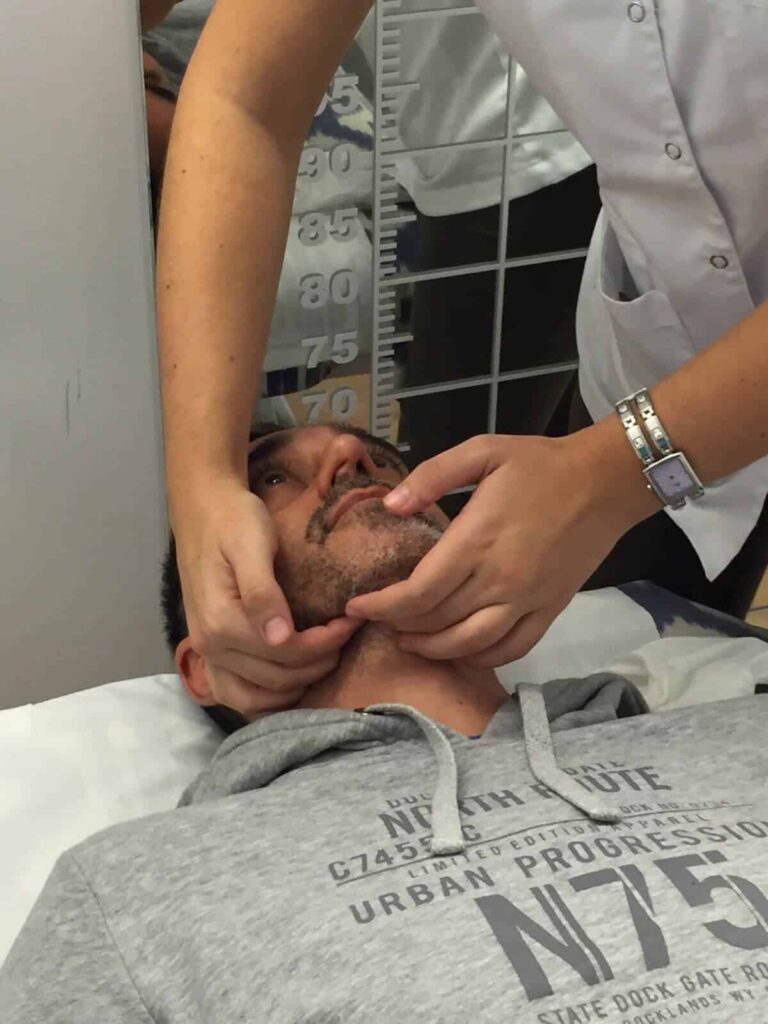Temporomandibular dysfunction is a general term that encompasses clinical symptoms involving the masticatory muscles, the temporomandibular joint and related structures; These can be presented individually or in combination.
The most common joint pathologies can be due to a synovitis or capsulitis, the first due to the inflammation of the synovial upholstery of the TMJ, while the second is the inflammation of the fibrous capsule related to the distention of the ligaments.
Both have a common clinical symptomatology:
- Joint pain at rest
- Pain increases with function, joint load and selective palpation
- Functional limitation
- It may lead to referred pain in the ear
MUSCLE PATHOLOGY IN THE ATM.
The muscular function in this joint can be interrupted by different alterations, either by Local or Systemic factors.
Local factors are usually traumatic or joint that modify the stimuli of these structures. They can be broken by a tooth, by chewing very hard foods, hyperaperture with ligament distension.
The systemic factors are usually due to emotional stress, acute diseases or viral infections.
If one of these alterations is important, a muscular response called protectra co-contraction (muscular fixation) is produced creating a situation of local muscle pain.
In the case that this local pain does not disappear it would create an alteration in the tissues giving rise to a prolonged, deeper and constant pain.
PAIN REFERRED ON THE ATM
The referred pain is a pain spread, not located at the tip of the finger, diffuse and whose origin is not in the area of appearance of this. It differs from an irradiated pain in that the nerve pathways are unharmed, affecting the musculoskeletal structures.
The most common musculature that generates pain referred to in the ATM are:
- Maserers
- Temporary
- Lateral and Medial Pterygoid
- Digastric
- ECOM (Esternocleidomastoideo)
ACUCHENS
Tinnitus is defined as an auditory sensation not caused by an external sound.

There are two types of tinnitus, one caused by a hyperactivity of the Auditory Nerve (not being able to deal with physiotherapy) and another caused by the hyperactivity of the Trigeminal Nerve due to malocclusion or Bruxist activity.
This supposes an impact on the musculature of the Temporo-Mandibular joint generating this auditory dysfunction.
BRUXISM
Bruxism is a parafunctional activity that is usually associated with sleep. It involves a grinding of teeth and usually occurs secondary to emotional stress.
This pathology can be approached in a multidisciplinary way, by means of occlusal devices and physiotherapy, being able to mitigate the symptomatology that it entails.
Its treatment consists in the relaxation of the muscular structures and normalization of the tone before the stress suffered by the joint due to the contractions maintained.
• Licenciada en educación física INEF por la Universidad de Lleida.
• Maestría en aerobic.
• Maestría en Fitness.
• Maestría en gimnasia rítmica y deportiva.
• Instructor BTS de Body Balance y Body Pump.
• Tonificación, Step y Aerobic de Fitness Pentatlón.
• Instructor de ciclismo Indoor y Tot Cycling.


